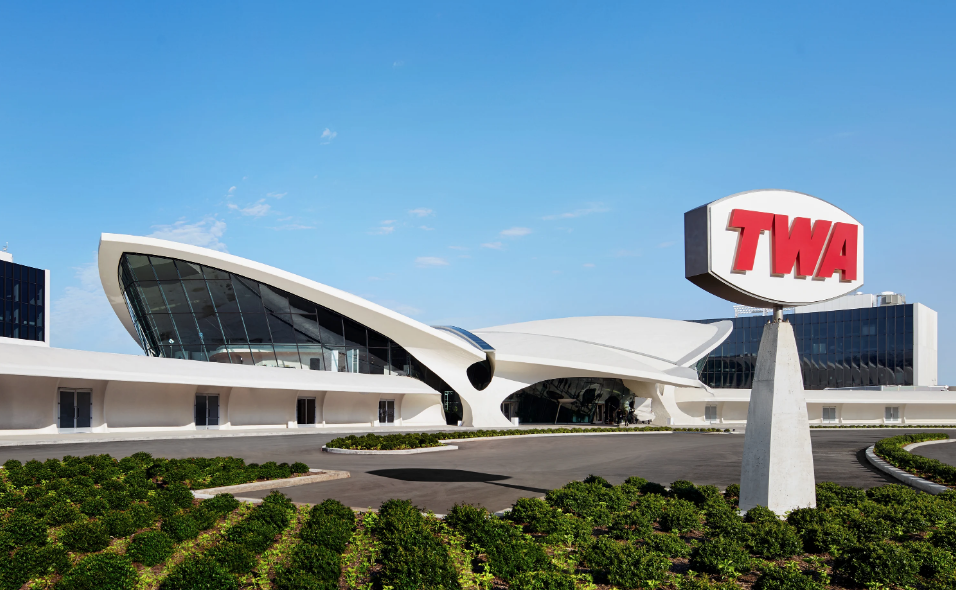Originally completed in 1962, Eero Saarinen’s TWA Flight Center has been transformed into a first-class hotel, attracting design enthusiasts and international travelers alike for a trip back in time.
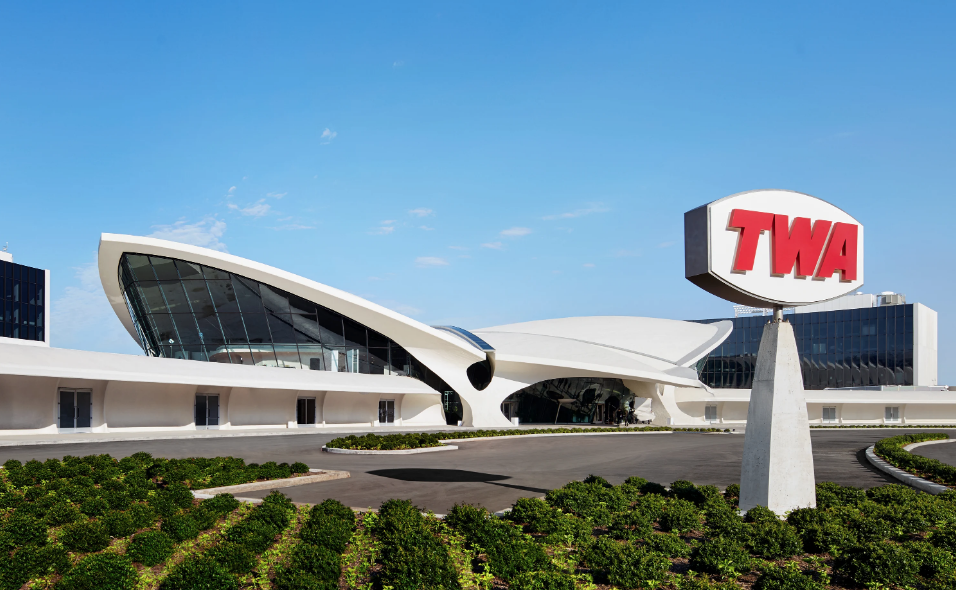
The dramatic swoosh of pure white walls and lush red carpet in the TWA Hotel evokes the same thrill and weightlessness of an airplane takeoff. With hardly an angle in sight, the energized curves of the former Trans World Airlines Flight Center are a paradox, at once nostalgic and futuristic.
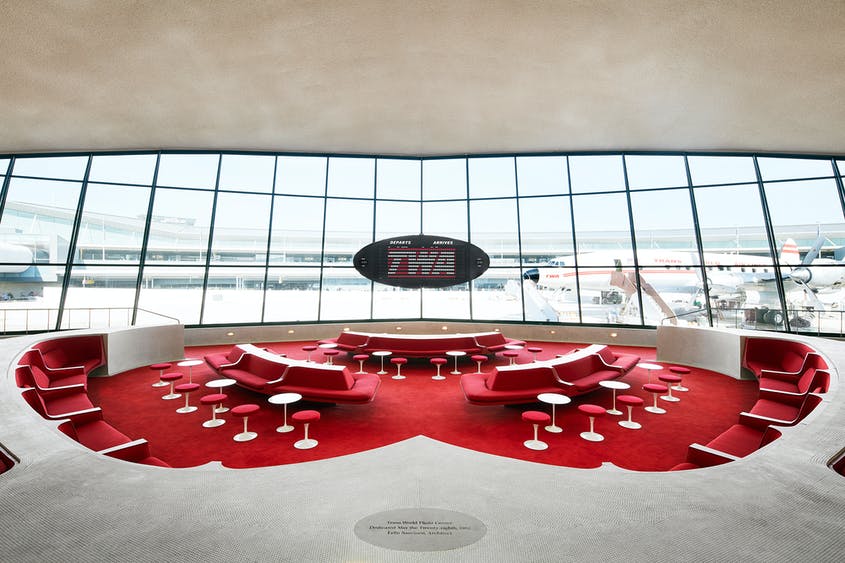
Located just 12 miles from Midtown Manhattan, the building’s storied past has regained relevance in the eyes of designers since its 2019 renovations. In the United States, commercial air travel saw a steady rise through the mid-century, surging into the ‘50s. By 1954, what is now known as John F. Kennedy Airport had the highest volume of international air traffic of any airport globally—in the same year, Howard Hughes, the owner of the TWA, commissioned a new terminal to be built adjacent to the main arrivals building. The flight center, designed by Eero Saarinen and Associates, opened its doors in 1962, instantly becoming an icon of post-war optimism and the Golden Age of Flight.
Saarinen’s original design aimed to elegantly solve issues of human traffic congestion and other functional inefficiencies affiliated with travel, conjuring baggage carousels and satellite gate areas as accessories to the TWA terminal. But as time went on and the world seemed to shrink, airplanes grew larger—and so did the number of people passing through airline terminals (the number of people moving through the airport more than doubled in the Flight Center’s first 30 years). So, in the decades following the TWA Flight Center’s completion, Saarinen’s emblem of worldwide travel increasingly struggled to accommodate the throngs of people passing through New York’s international airport. In 2001, the terminal was shut down entirely.
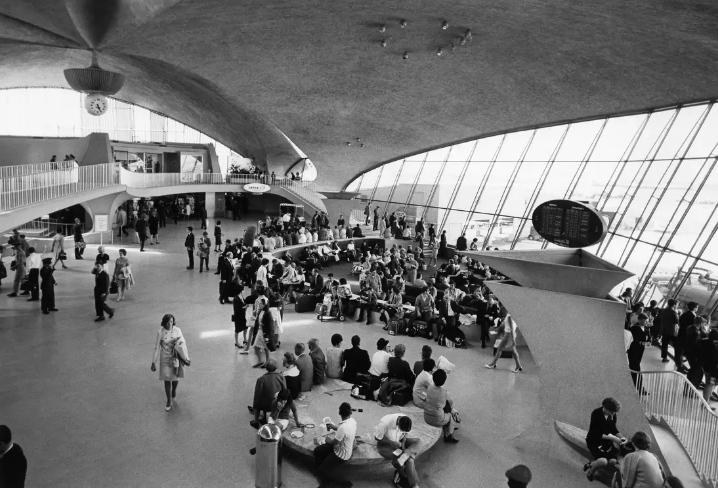
Flash back for a moment to 1994, when New York City Council declared the terminal an interior landmark, placing the TWA Flight Center among the ranks of Grand Central Terminal and the Statue of Liberty. Its functional obsolescence, however, posed one glaring problem for TWA’s owners and operators. After all, the costs of overhead didn’t just disappear. After years of planning, though, an impressive revamp began in 2016, led by Turner Construction Company. Over the course of three years, the defunct airline terminal was not only revived, but the renovation included two wings for a new top-of-the-line hotel. The interiors remain faithful to Saarinen’s original design, bolstered by Amish woodwork and a LEED certification.
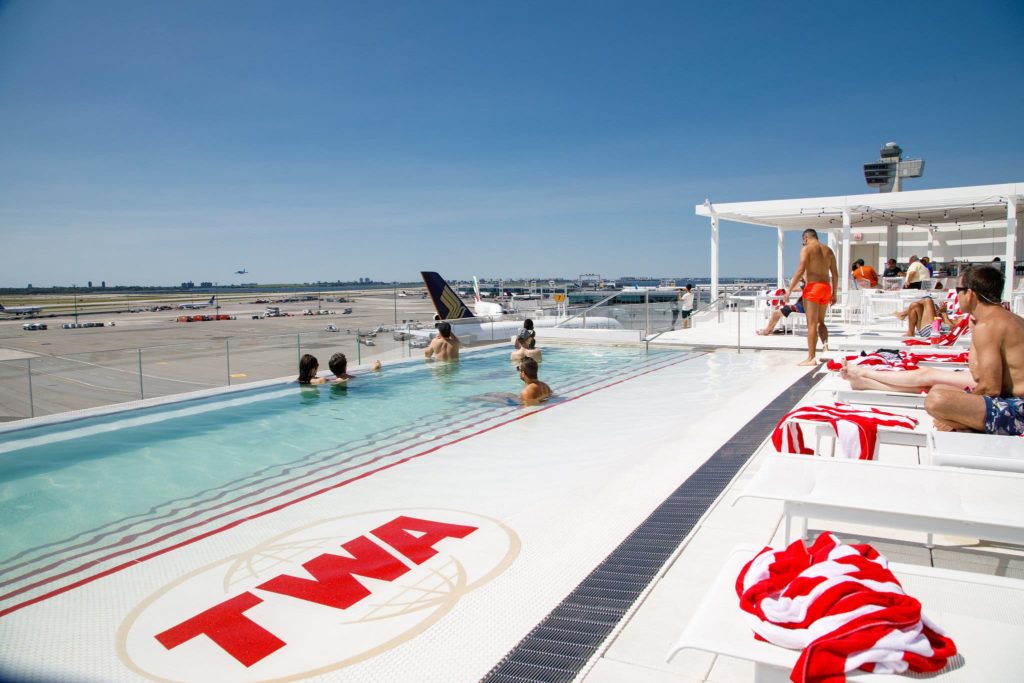
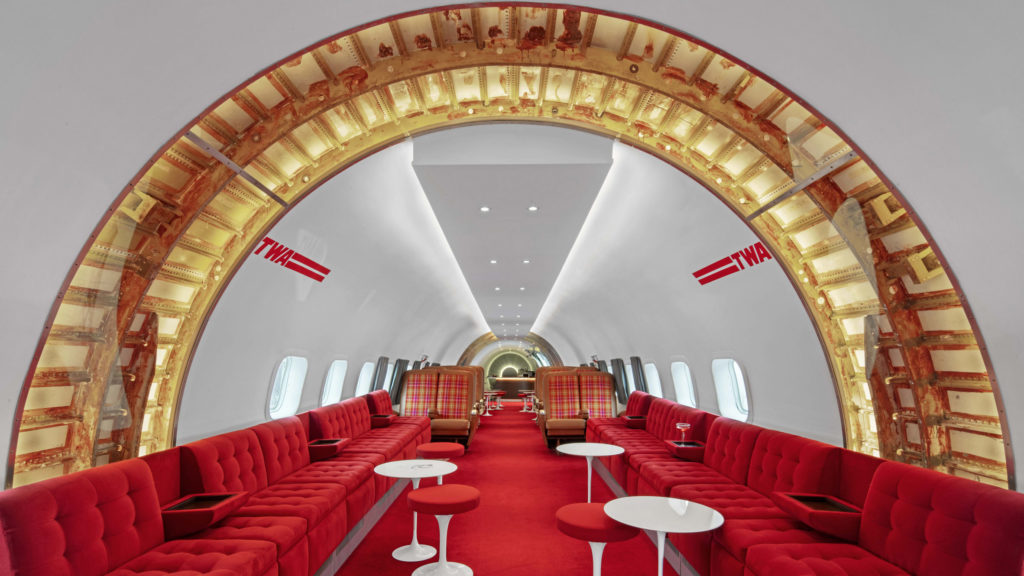
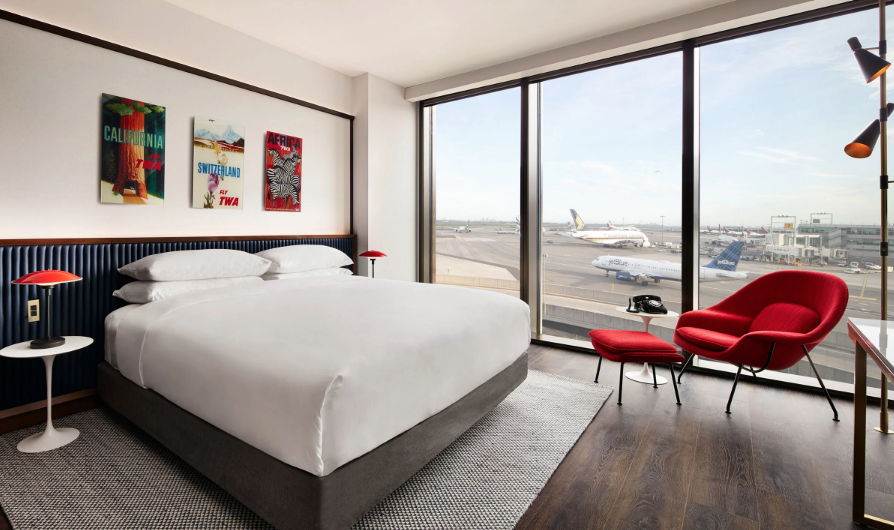
To call the repurposing of the TWA Hotel clever would be an understatement. The reincarnated building’s intrinsic spirit of adventure and anticipation has taken form in a ‘60s wonderland of red and white, complete with costumed staff (notably, their pillbox hats). Boasting 512 guestrooms, a 10,000 square foot fitness center, a rooftop infinity pool and unrivaled views of the JFK Airport runway, the hotel has become something more than a place to spend an unlucky flight cancellation—one of four surviving Lockheed Constellation airplanes now serves as a buzzing cocktail lounge and a Twister room challenges passers-by to a rousing round of the classic 1960s game. The part-hotel, part-design relic has become the ideal location for curious travelers looking to pass the slow minutes before takeoff, or a ticket for local New Yorkers to travel back in time.
For more mid-century design inspiration, check out our selection of Pacific Northwest modern homes on 360modern.com!
